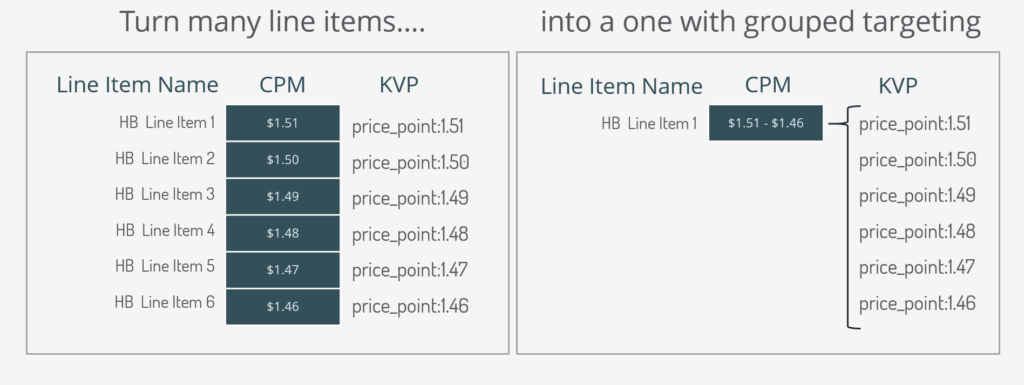How to keep Header Bidding from Hurting
How to keep Header Bidding from Hurting
Executive Summary
- Header Bidding is designed to increase dynamic competition for HB-enabled buyers.
- However, increasing liquidity to a minority of buyers gives an unfair pricing advantages leading to price erosion — and can decrease overall prices among other buyers.
- App publishers must protect existing (non-HB) buyer inventory.
- Based on our previous findings, mobile app publishers should strongly consider header-bidding for their inventory but proper management is key to yield optimal results.
Introduction
While slow to start, we’ve seen header bidding hit mainstream in 2019; we’ve seen enough repeated success that we can safely say we’ve “Crossed the Chasm” and are entering the Early Majority of the technology adoption life-cycle. As our customers and networks continue to ask our suggestions on the optimal header bidding set-up in MoPub, we’ve outlined our findings across the wide-variety of inventory we manage.
This article is designed to help publishers design the optimal monetization strategy for including header bidding; we assume you understand what header bidding is and how it technically works in your ad stack.
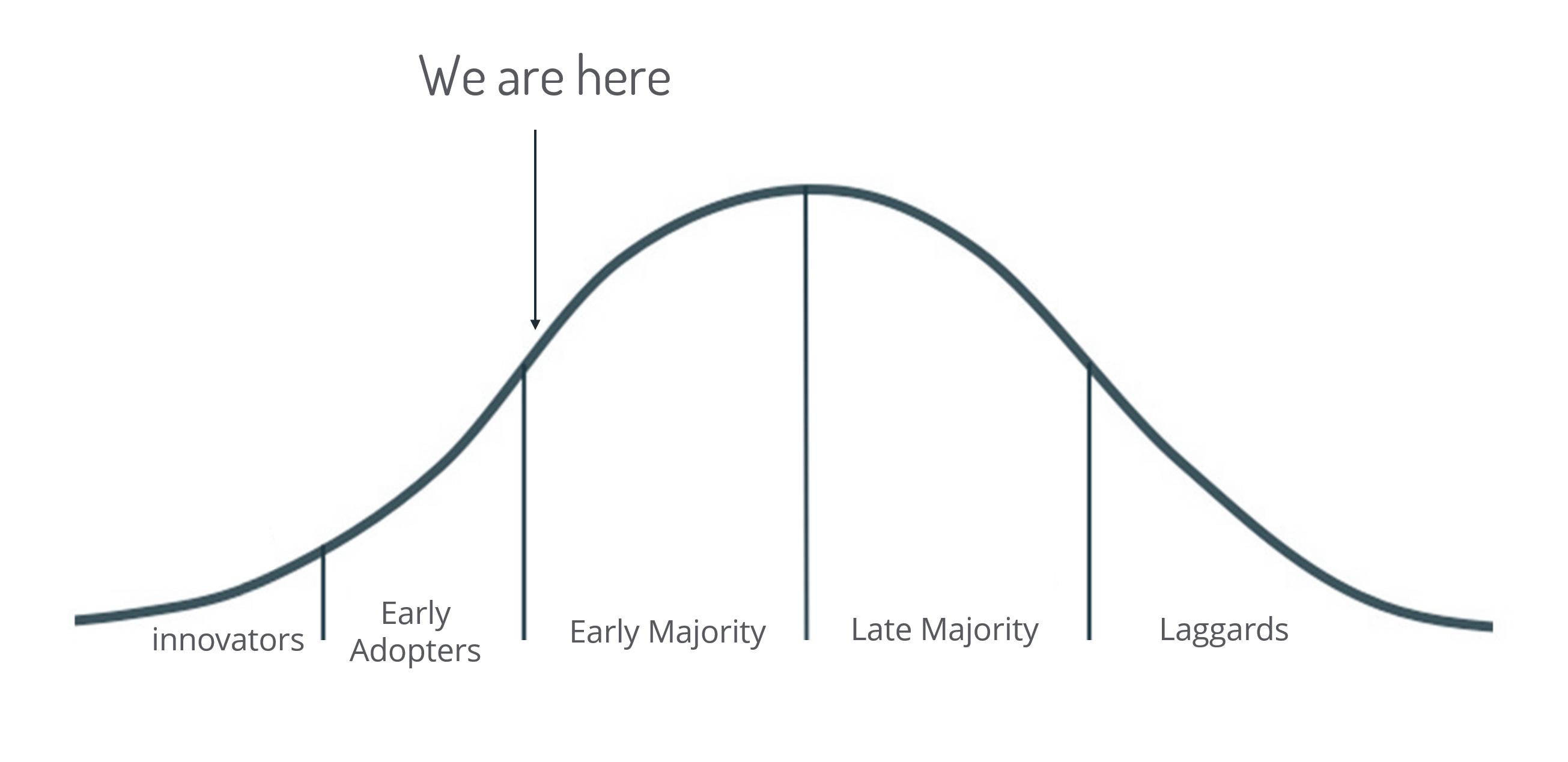
“Header Bidding” is an incorrect term for mobile in-app advertising, parallel bidding is a more accurate definition but for the purpose of this article, we extend the naming convention of “Header Bidding” (HB) to be any bid-pricing enabled demand-source with dynamic access to your traffic. That is: a marketplace with the ability to buy above or below other buyers depending on auction results.
The recommended method: “You need how many line items?”
The recommended way to enable header bidding is to create a line item per auction price-point. The idea is the winning HB bid is sent in the ad request, where there is a line-item to “catch” each price-point. The problem is you need a Key Value Pair (KVP) – a line item — for every single price point possible. Usually this is rounded to the nearest cent, meaning if you want to cover price points $0.01-$5.00 you’d need 500 line items.
Note: We’ve seen price-points set at the thousandth (X.XXX) – which we can’t recommend as that would turn the 500 line items into 5000 – over the limits of most ad servers.
The benefit is a “flattened” the waterfall, creating a one-to-one request per line item, eliminating latency accrued in the traditional daisy-chaining method of selling traffic as well as increasing the liquidity of demand partners accessing your traffic.
But a flat waterfall isn’t always better
An elementary – but important– fact to remember for publishers selling traffic: buyers are always looking for a lower price. And the ugly truth to providing liquidity to a subset of buyers is giving a minority of demand a pricing advantage will lead to price erosion for the remaining buyers. In other words: allowing a minority unfair advantages will hurt overall competition.
A simple example
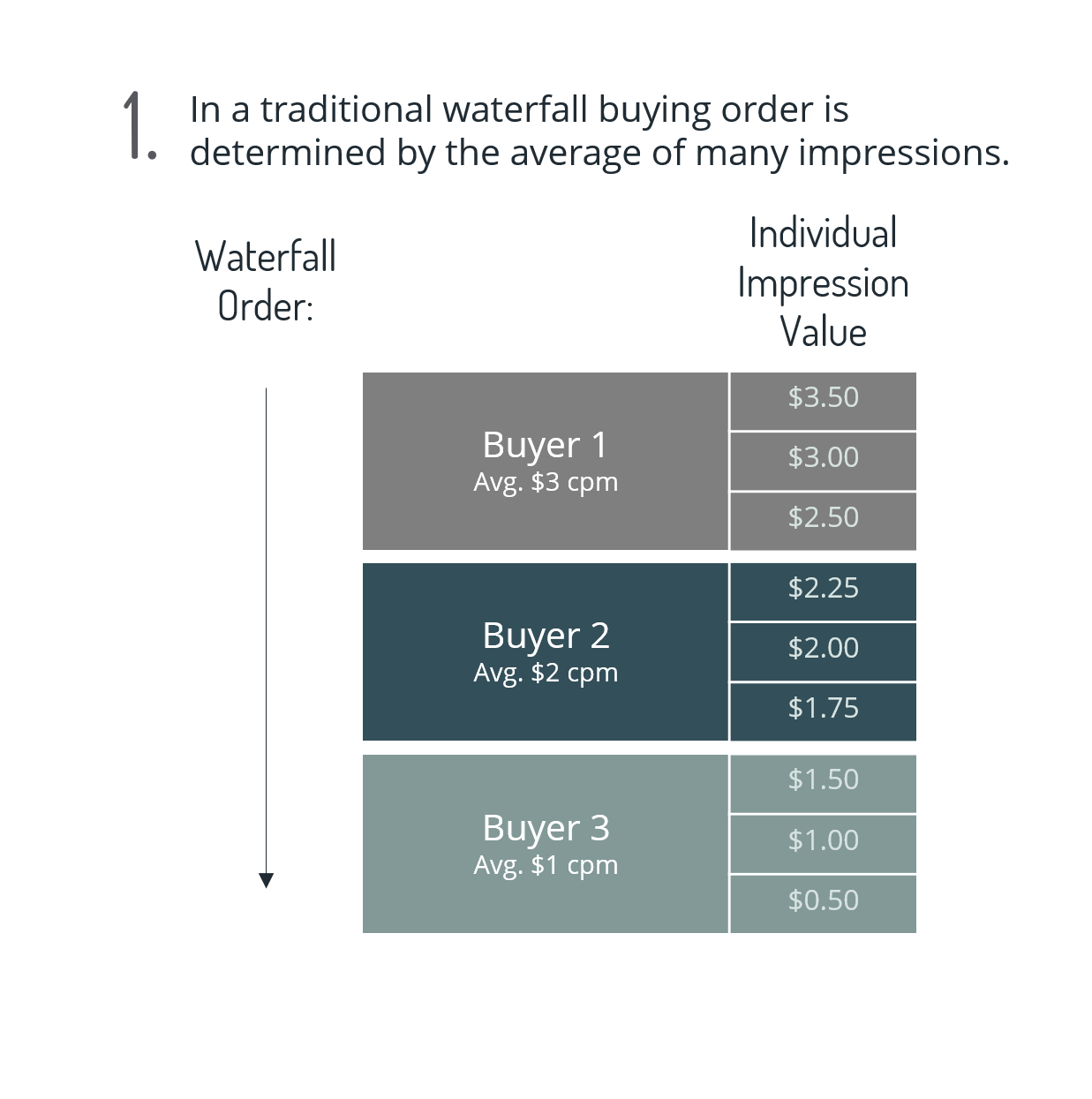
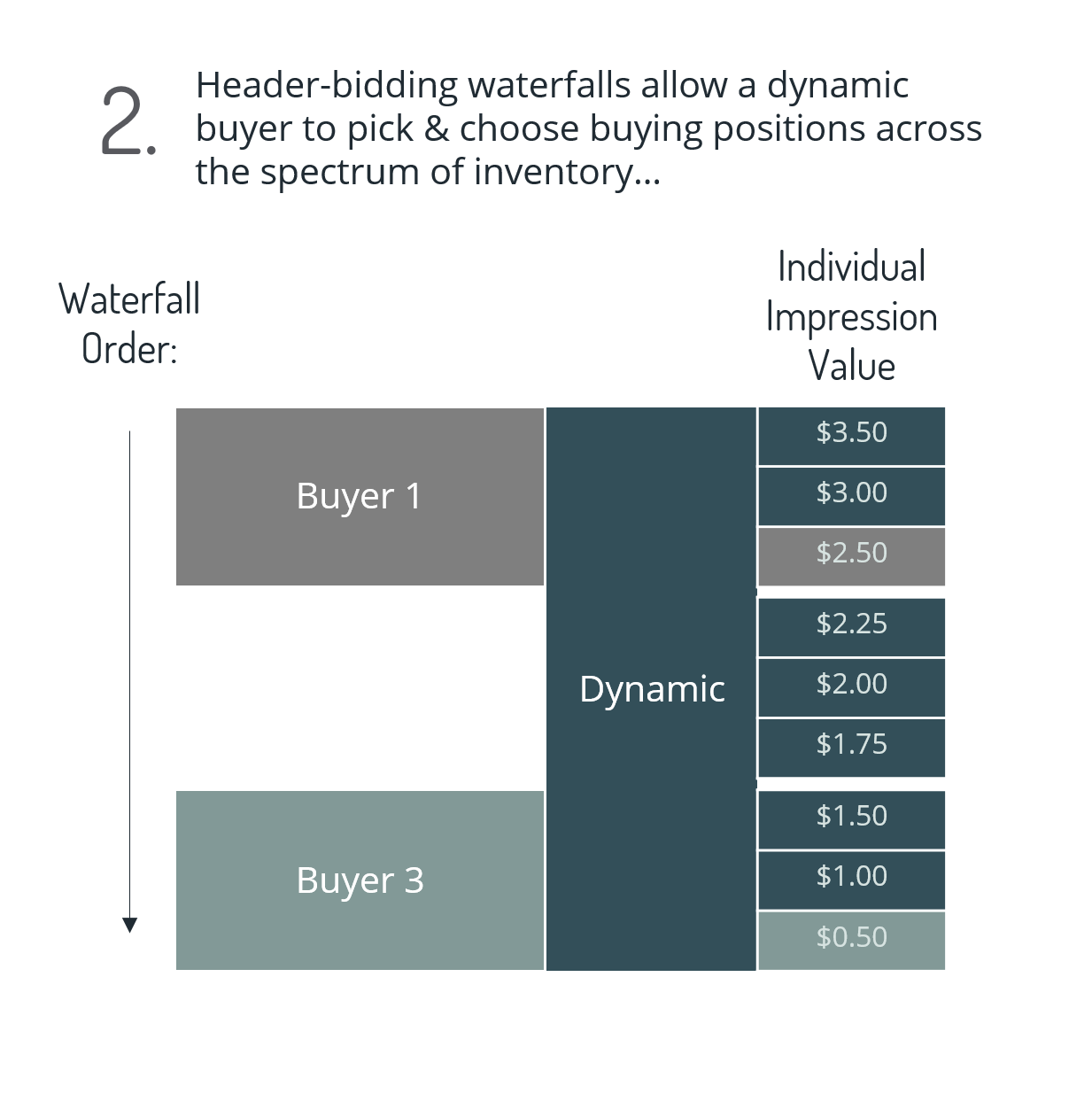
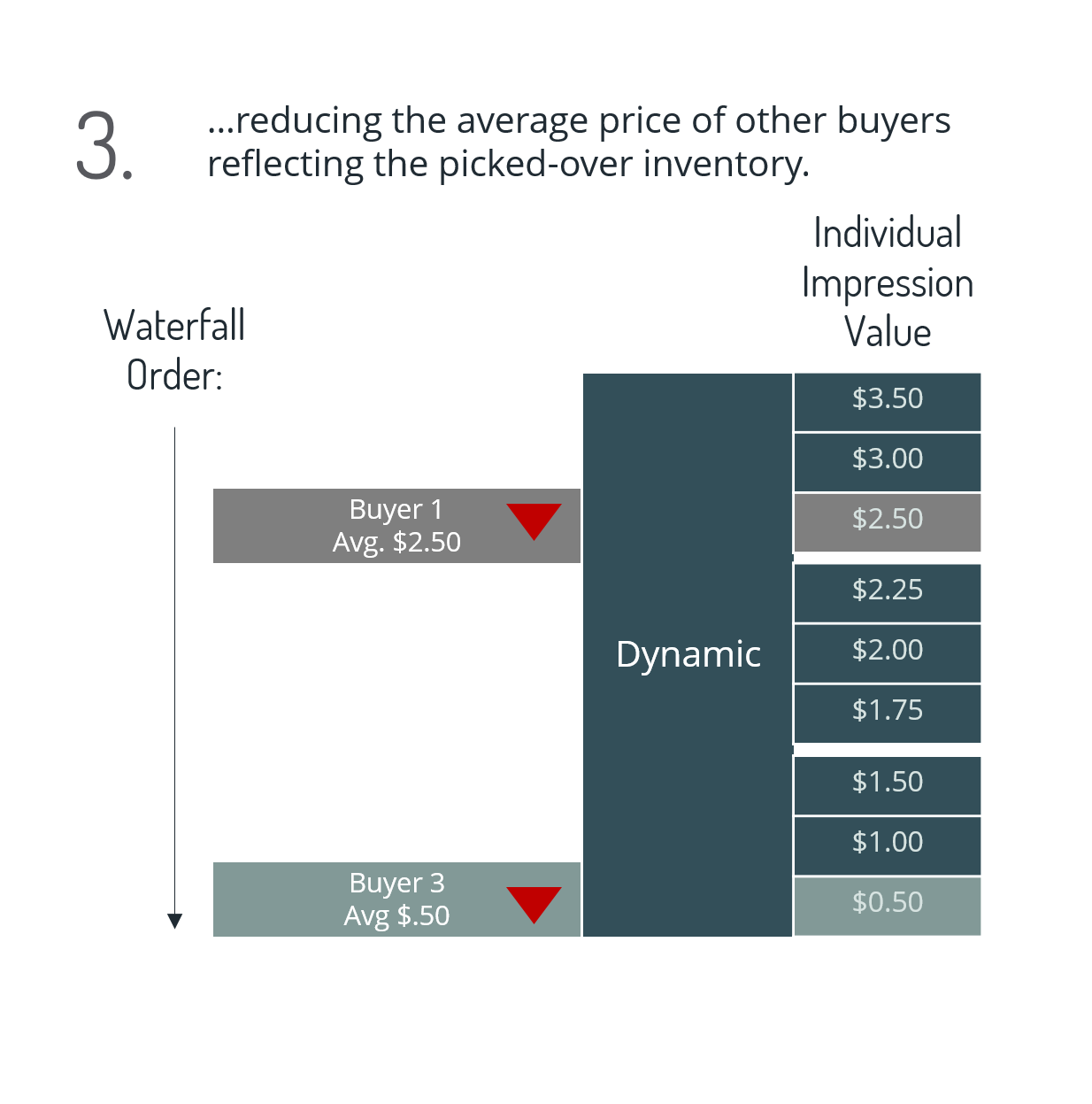
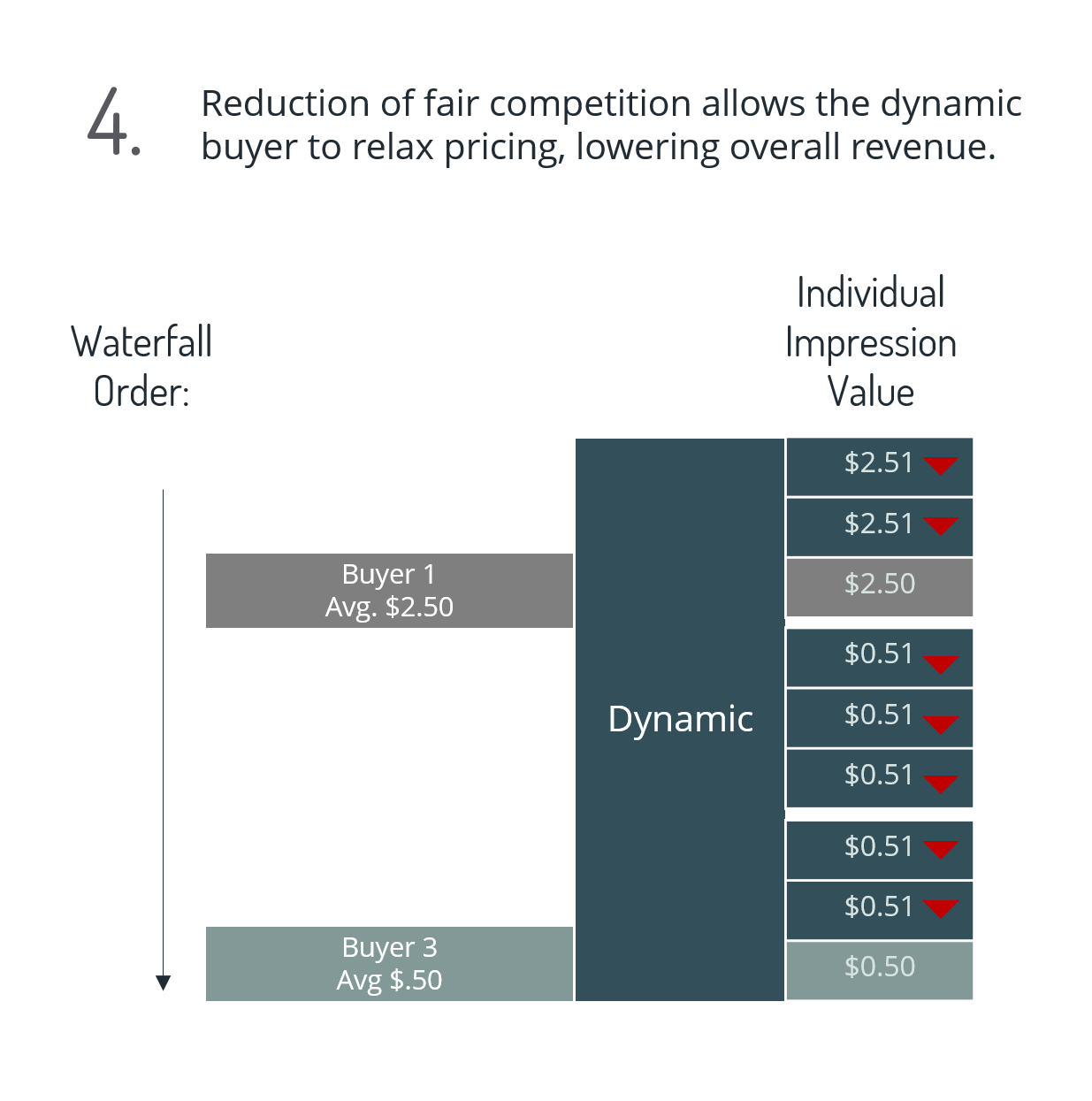
We’ve found the creation of “band-buys” allow HB line items to buy in-between multiple, spaced floors which provide a level of protection to non-HB buyers. The concept of grouping KVPs (bid prices) into single line items among the multiple floored non-HB line items allow the advantages of header-bidding traffic while protecting existing buyers — with the added benefit of minimizing the effort in creation of header-bidding line items.
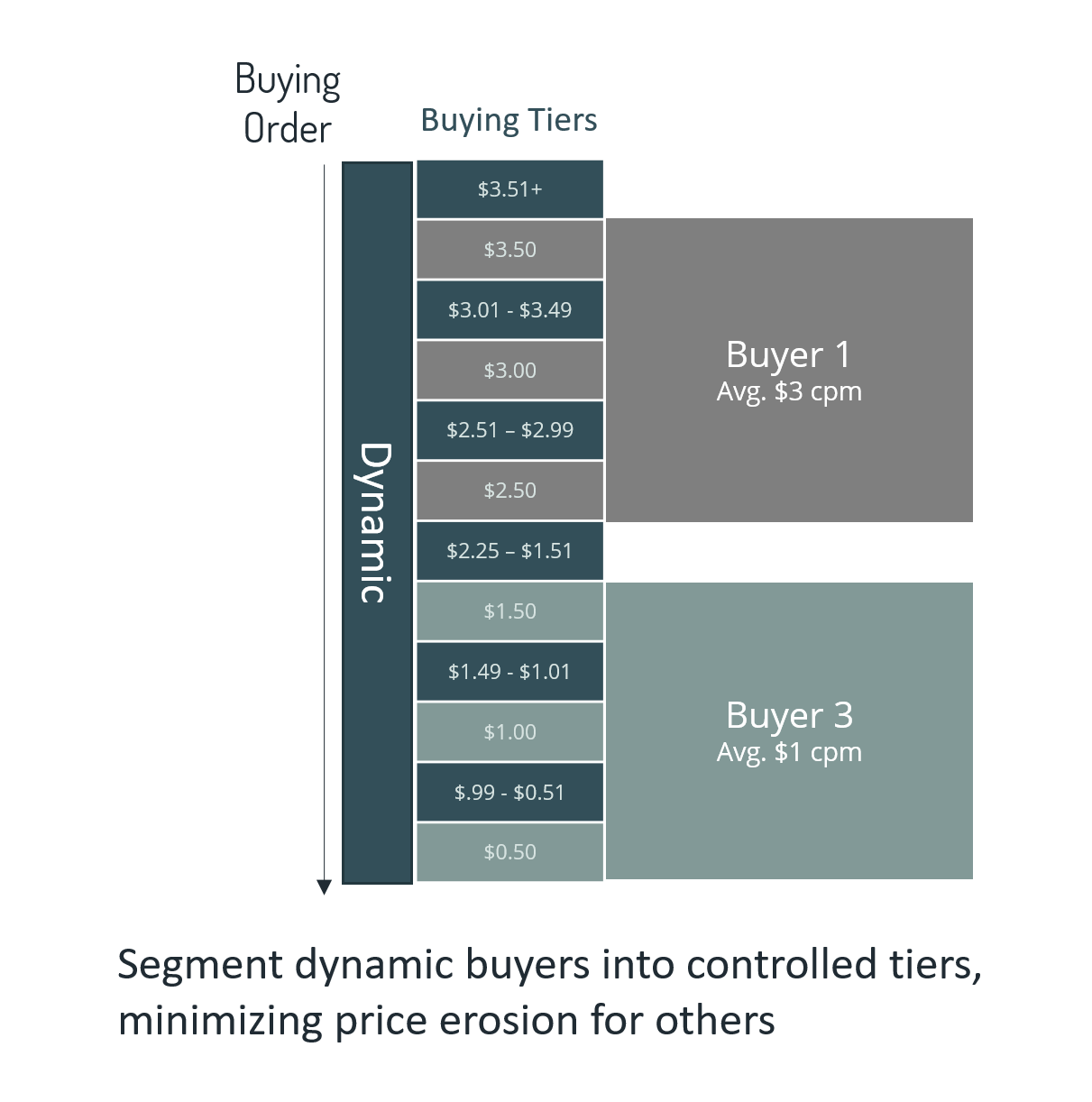
You don’t need hundreds of line items!
Conclusion: Protect your inventory
For the same reason you wouldn’t allow a single buyer to name their discount, allowing a minority buyer to buy dynamically can create an unfair pricing situation. Unless a vast majority of your demand is competing in real-time, dynamic pricing can hurt overall pricing and protection needs to be applied for networks using aggregated CPM values.
Other Items To Consider:
- Reporting: those familiar with ad network reporting can attest to the complexity with multiple sources of truth. Unfortunately the complexity grows in scope with header-bidding: either by introducing a massive increase in granularity in reporting by introducing obscurity by averaging impressions across multiple price-points & line items. Ultimately in production environment, it’s very hard to verify the network is buying the impression at the price-point specified.
- Tags: some of the more established partners are buying via Javascript ad tags, which are known to cause issues within the mobile-app environment. Possible serving discrepancies & refresh controls can cause for integration issues even among the most accomplished ad-tech engineers.
- Another issue with tags is the confusion around GDPR-enabled countries. The CMP solutions still provide a complex work-flow for approval and ennoblement across the ad-server and header bidding partner.
- KVPs/Line items limits: As mentioned earlier, there is a limit to the default line items allowed in MoPub (1000) and to the number of characters allowed in the KVP field (10,000). For this reason we can’t recommend using the maximum granularity of pricing by the thousandth.
What our customers say:
“Partnering with AdLibertas has turned out to be one of our most important strategic decisions. Their automatic waterfall management and market expertise resulted in a massive revenue increase while saving us a huge amount of time and resources from the very first day of working together.”


About us:
Curious about header bidding? We can help. Our customers rely on us for the creation, management and optimization of header-bidding enabled line items. We make the implementation a hands-free affair.
The name AdLibertas comes from our motto “ad victoriam mercaturae ducit libertas” — Latin for “the free market wins.” As former app-developers we’ve designed a publishers-first solution to help app developers earn more from their in-app ads. Contact us or sign-up to learn how other app developers are earning more by automating their current advertising platforms with AdLibertas.
